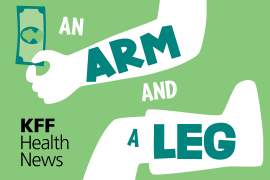It does not take a hurricane to put nursing home residents at risk when disaster strikes.
Around the country, facilities have been caught unprepared for far more mundane emergencies than the hurricanes that recently struck Florida and Houston, according to an examination of federal inspection records. Those homes rarely face severe reprimands, records show, even when inspectors identify repeated lapses.
In some cases, nursing homes failed to prepare for basic contingencies.
In one visit last May, inspectors found that an El Paso, Texas, nursing home had no plan for how to bring wheelchair-dependent people down the stairs in case of an evacuation. Inspectors in Colorado found a nursing home’s courtyard gate was locked and employees did not know the combination, inspection records show. During a fire at a Chicago facility, residents were evacuated in the wrong order, starting with the people farthest from the blaze.
Nursing home inspectors issued 2,300 violations of emergency-planning rules during the past four years. But they labeled only 20 so serious as to place residents in danger, the records show.
In addition, a third of U.S. nursing homes have been cited for another type of violation: failing to inspect their generators each week or to test them monthly. None of those violations was categorized as a major deficiency, even at 1,373 nursing facilities that were cited more than once for neglecting generator upkeep, the records show.
“That’s the essential problem with the regulatory system: It misses many issues, and even when it identifies them, it doesn’t treat them seriously enough,” said Toby Edelman, a senior policy attorney at the Center for Medicare Advocacy. “It’s always the same story: We have some pretty good standards and we don’t enforce them.”
In the wake of eight deaths at Rehabilitation Center at Hollywood Hills, Fla., following Hurricane Irma, heightened attention has focused on new federal disaster-planning rules, with which nursing homes must comply by mid-November. Those were prompted by nursing home and hospital deaths during Hurricane Katrina in Louisiana in 2005.
Dr. David Gifford, senior vice president for quality and regulatory affairs at the American Health Care Association, a nursing home industry group, said facilities have gotten better at handling disasters after each one. Most evacuations go smoothly, he said.
“After each one of these emergencies we’ve learned and gotten better,” Gifford said.
But advocates for the elderly say enforcement of rules is as great a concern, if not greater.
Dr. David Marcozzi, a former director of the federal emergency preparedness program for health care, said that inspectors — also known as surveyors — should observe nursing home staff demonstrating their emergency plans, rather than just checking that they have been written down.
“If you have not implemented and exercised plans, they are paper tigers,” said Marcozzi, now an associate professor at the University of Maryland School of Medicine. “The emphasis from the surveyor has to be ‘Show me how you do this.’ ”
Gifford said pre-planning and drills, which are important, only go so far in chaotic events such as hurricanes.
“No matter what planning you might have, what we have learned from these emergencies is these plans don’t always work,” he said. Nursing homes take surveys seriously and face closure if they do not fix flaws inspectors identify, he added.
Inspection results vary widely by state, influenced sometimes by lax nursing homes or more assertive surveyors, or a combination, according to an analysis of two types of emergency-planning deficiencies. In California, 53 percent of nursing facilities have been cited for at least one of two types of emergency-planning deficiencies, and a quarter have been cited in Texas. No nursing home in Indiana, Mississippi or Oregon was issued violations for those two emergency-planning violations during the past four years.
Asked to explain the rarity of severe citations in emergency preparation, the federal Centers for Medicare & Medicaid Services, which oversees inspections, referred a reporter to its emergency-preparedness mission statement on its website.
The danger of high temperatures for elderly residents, which the Hollywood Hills case shows can be disastrous, has been well known. In a heat wave in 2000, two nursing home residents in a Burlingame, Calif., facility died and six others suffered severe dehydration, heat stroke or exhaustion.
During the past four years, inspectors have cited 536 nursing homes for failing to maintain comfortable and safe temperature levels for residents. Inspectors deemed 15 as serious, including two where patients were harmed, records show.
“There is undoubtedly little, if any, enforcement of the laws since we see the same tragedies repeated time and again,” said Patricia McGinnis, executive director of California Advocates for Nursing Home Reform.
Clarification: This story was updated on Sept. 19 clarify to make clear that 53 percent of nursing facilities in California and a quarter of them in Texas were cited for at least one of two types of emergency-planning deficiencies — not both types of deficiencies.
KHN’s coverage related to aging & improving care of older adults is supported by The John A. Hartford Foundation. Coverage of aging and long-term care issues is supported by The SCAN Foundation.








